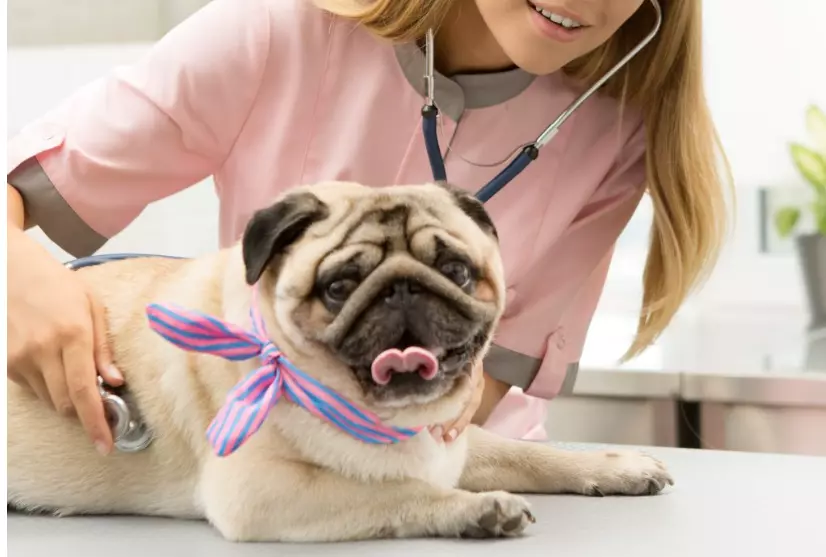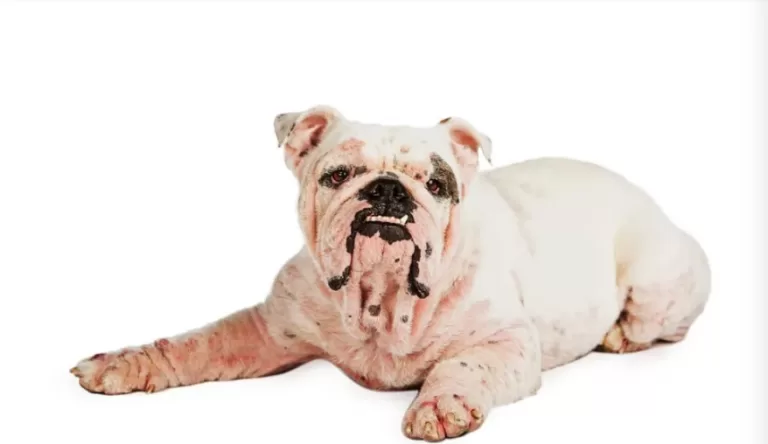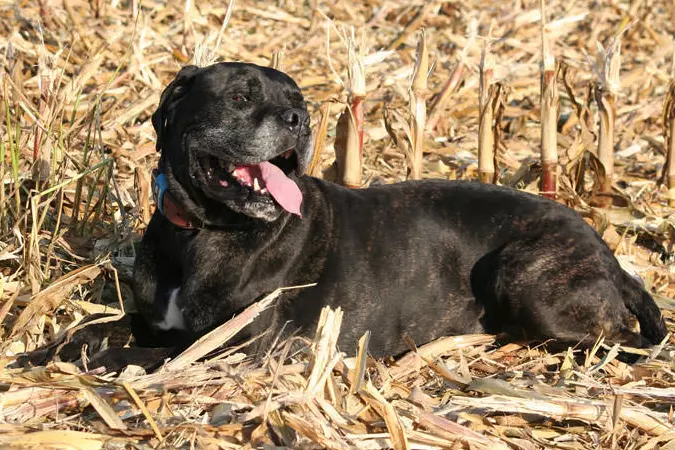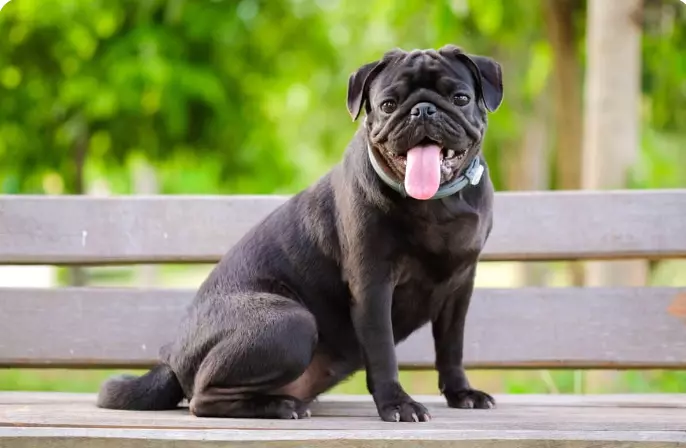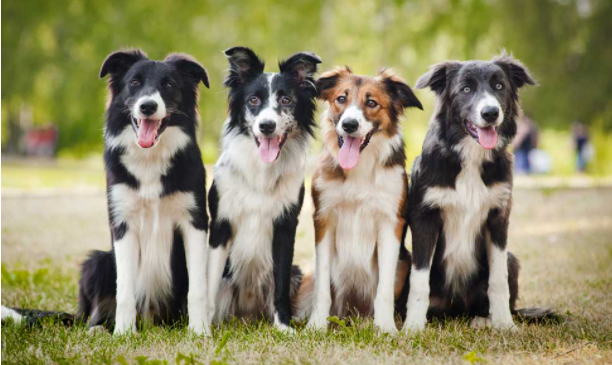Common Pug Food Allergies – All You Need to Know
Table of Contents
If You want to keep your Pug healthy and happy, feed him healthy food without allergies. He will start to love you more and be a better companion to you and your family. There are some foods your Pug cannot eat because of allergic reaction. So, what foods should you choose instead?
A few popular foods for pugs are beef and pork. Other foods include chicken and fish. However, you should only feed your pug high-quality dog food for a healthy dog immune system. This means that you should choose foods that are specially made for pugs.
This article will provide some general guidelines about foods you should avoid because of common food allergens in your pugs and what are the food allergy symptoms and how to diagnose Common Pug Food Allergies. I hope this knowledge will be helpful to you.
So; Let’s start reading:
Different kinds of allergies in pugs:
There are many different kinds of allergies in pugs, like skin allergies, food allergies, and environmental allergies:
Skin allergy:
Skin infections and allergies are very common in pugs. If your Pug suffers from this allergy, he might have rashes, itching, or burning on his skin. These rashes could be red, scaly, or brownish.
Sometimes, your Pug may even develop a rash all over his body. If you find that your Pug is suffering from this, you should take him to the vet. He should also check his skin to ensure there isn’t anything wrong with it. The vet may recommend some treatment options if he has a skin allergy.
Common Pug Food Allergies
Food allergy is another common allergy that you may see in your Pug. Most common Food allergens are the reasons for chronic diarrhea in dogs. If your Pug is affected by this, you should keep his food and water clean.
If you observe that your canine is suffering from a food allergy, Pet owners should try feeding him food that doesn’t contain wheat, corn, barley, rye, or oats. If he still has problems, it’s time to take him to the vet.
Environmental allergies:
Your Pug may also suffer from environmental allergies. If he is allergic to something, it could trigger a reaction in his body. Environmental allergies are usually caused by pollen and dust. If your Pug has this allergy, he could sneeze, cough, and breathe heavily.
Sometimes, it’s not possible to control these allergies. If your Pug is experiencing any of the symptoms of this allergy, you should take him to the vet immediately.
Symptoms of Pug Dog food Allergies
Pugs are cute dogs and adorable for those who like to get close to them. They’re known to be the best companions and loyal pets, but they’re also very easy to train. They are usually considered friendly, gentle dogs.
Pugs are very sensitive to food and other allergens. To ensure they don’t suffer from food allergies, you must feed them only good-quality foods and avoid certain ingredients. In case you have pug dog food allergies, the following severe symptoms include:
• Itchy skin.
• Redness on the nose.
• Sneezing.
• A runny nose.
- • Drooling.
- excessive scratching
- Itchy ears.
Allergic reactions are quite common in pugs and can develop into other problems. To manage your dog’s food allergies, you must first determine what is causing them.
When feeding your dog, make sure it has all its daily requirements. If possible, ensure you avoid giving them foods containing food coloring dyes, fillers, artificial colors, and flavors.
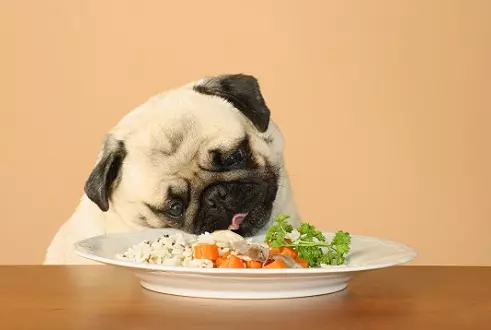
How to Diagnose Pug Dog Allergies
There are several ways to diagnose pug dog food allergies. The following are some ways to diagnose pug dog allergies:
One way to diagnose pug allergies is to check your dog’s stool for signs of itching. If you see that your pet’s stool is dry, your dog is having digestive troubles. Allergies could cause this. Your pet scratching its ears indicates that he is allergic to anything, so keep an eye out for it.
Dogs with pug food allergies may exhibit other symptoms such as coughing, sneezing, and vomiting. Your dog may be experiencing diarrhea and significant weight loss. A change in your dog’s appetite is another sign. Usually, a change in your dog’s nutrition is to blame for this. Infection is another reason why your dog’s appetite can vary.
If your dog suddenly stops eating and drinking water, this could be due to an illness. Another way to diagnose pug dog food allergies is to check your dog’s tongue. If you find that it is red, it could mean that he suffers from an allergy.
If you notice that your dog’s tongue looks swollen, this could mean that he is suffering from an ear infection. You may want to give him some treatment to get rid of his discomfort.
How to Get Rid of Pug Dog Allergies
You can try these remedies if you have problems with your dog’s food allergies.
Make sure your dog gets enough exercise. Make sure he walks daily or play with him inside for at least 30 minutes each day. This is important for keeping him active.
An elimination diet is another strategy used to get rid of pug allergies. The foods that cause severe allergies would be eliminated to reduce allergies.
Feed your dog a good diet, but don’t overfeed him. You could be giving him some extra weight if he doesn’t eat well. Try to feed him smaller amounts and increase the water he drinks.
Make sure that your dog eats only dry food. Please do not give him any wet food unless it has been specially formulated for dogs. This is because wet food contains many carbohydrates that are converted into sugar which causes your dog to gain weight.
Giving your dog a healthy diet is crucial. Protein, fat, and carbs should distribute in the optimal ratio of 40:40:20. For every dog, this is the perfect ratio. The lower the carbohydrate content, the less probable your dog will gain weight.
Pugs love to play with their owners. A Pug should feed a diet that has a balanced amount of protein and fat, and limiting carbohydrates to only about 20% of his diet is good to make the Pug’s immune system strong.
Pug Food Allergies Treatment
If your dogs suffer from food allergies, there are two main ways to treat them. One way is to keep him away from pug dog food allergies. If you want to avoid taking him to the vet, you can also take medication to manage his symptoms.
If your pug dog has trouble breathing, eating, or urinating, you might want to check with your vet first. An anti-allergy medication may be necessary to treat your dog’s food allergy to control the issue.
If you want to administer medication to your dog, you must ensure that it is administered in the appropriate quantity and manner. Your veterinarian can also suggest the best treatments for your pug dog’s food allergies. You must monitor your canine to determine whether he is improving.
Tips for preparing homemade dog food
You can try making your dog’s food yourself. To begin with, you will need a basic dog food recipe. Your veterinarian can provide you with several recipes. You can also check out some of the dog food recipes that have been tested and reviewed. Then, you can add various ingredients to suit your dog’s specific needs.
It would be best to add only a small amount of the ingredients carefully. Your dog may have diarrhea if a certain component is consumed in excess.
In addition, you should not use any herbs you have picked up at the store. Instead, you can find some at your local supermarket. There are certain herbs that your dog’s digestive system can’t process, and this can cause diarrhea. It is a good idea to look up herbal remedies online.
If you want your pug dog to stay healthy, you should feed him fresh, organic foods and dry and raw foods. Your dog’s diet should include some high-quality proteins and carbohydrates. Some ingredients you can use to make your dog’s diet nutritious include fruits, vegetables, and whole grains.
A pug dog’s diet should contain some high-quality proteins. Proteins are one of the best energy sources for your dog’s body. You can add some high-quality proteins to his food. You can mix some chicken or beef with some cottage cheese. This combination is very filling and can help improve your dog’s digestion and better overcome Pug’s allergies.
Ensure that the food you feed your dog is nutritious and appealing to him. Your dog’s diet should include some vitamins and minerals as well. These include vitamins B12 and D, zinc, potassium, selenium, and calcium.
The more fruits and vegetables you can offer your dog, the better it will be for her. It would assist if you were also careful when cooking your dog’s food. If you boil the food or cook it in too much oil, the taste of the food will change. This is not a good thing if you are cooking for your dog. You will want to ensure you are using the right temperatures when cooking.
Your dog can benefit from fresh, organically grown produce. Make sure that you keep your dog healthy by giving her nutritious foods.
Frequently Asked Questions
What are most pugs allergic to?
Pugs are usually allergic to both cat and dog dander. They can also be sensitive to food that contains wheat and milk. Some even develop an allergy to their fur, resulting in itchiness and skin irritation.
Are pugs prone to allergies?
Allergies are highly genetic; thus, your pet’s breed, age, and environment will determine how allergic they are. Pugs are not known for being prone to allergies. If your dog has an allergy, it’s better to avoid any triggers and seek veterinary help.
How long would it take a dog with a food allergy to recover?
It depends on the allergy’s severity and the dog’s age. Most food allergies take about 2-4 weeks to heal, but some are much worse and can take longer. Make sure to monitor your dog’s health closely, and if you notice any allergy symptoms, consult with a vet immediately to get the right treatment.
What is the best dog food for a dog with allergies?
Allergies can be very tricky when choosing a dog’s food. Your dog’s diet is one of the most important factors in his health, so it should treat with care. While feeding allergy-friendly foods, you’ll need to avoid those that contain raw meats, dairy products, nuts, fish, shellfish, eggs, and soy.
What kind of meat is better for allergic dogs?
Generally, pork, chicken, turkey, and beef are good options for your dog with allergies. But as mentioned earlier, it’s important always to feed your dog food made from natural ingredients. Avoid using highly processed, artificial, chemical-filled food products. It’s also advisable to give your special dog foods for allergy symptoms, such as dry foods, since they might have dry skin and fur, and it can affect how much moisture they retain in their bodies.
What kind of food is ideal for dogs with dry skin?
Dogs with itchy skin often have allergies, so it’s best to get some allergy medication to help with their symptoms. The vet should advise you which type of medication is best for your dog and if there is any other thing that should include. If your dog is allergic to something, he can start experiencing the same symptoms again within a few days.
Are our lamb and rice good for dogs with skin allergies?
In short, yes, it is. Lamb and rice are extremely beneficial for dogs with sensitive skin. This diet provides them with complete nutrition, with the added benefit of being easy to digest for pets with digestive issues. It also helps to eliminate the amount of hair in the coat and makes the dog’s coat softer.
Is chicken good for dogs with allergies?
You can feed chicken to a dog with allergies by mixing half-cooked or fully cooked chicken in its food and see if it helps. If the symptoms do improve, then you can go ahead and continue feeding it to your dog. Remember that raw or undercooked meats can cause infections or severe illness.
Conclusion
Pugs may seem adorable, but they can have serious health issues you may not know about. Pugs are prone to different allergies, and you must understand the signs and symptoms to know when your Pug needs to see a vet.
For most pugs, it’s the number one cause of lethargy and poor activity. It’s often treated with steroids which causes more harm than good. However, if you discover it early, you can avoid a situation that could be fatal.
So please, keep an eye out for your Pug and if you see anything unusual in their behavior, contact your vet immediately.
- 1xbet официального Сайт Казино Игровыми Автоматами 1хбет - April 17, 2024
- Бездепозитные Бонусы За Регистрацию и Онлайн Казино 202 - April 9, 2024
- Yeni Deneme Bonusu Veren On Line Casino Siteler - January 31, 2024

